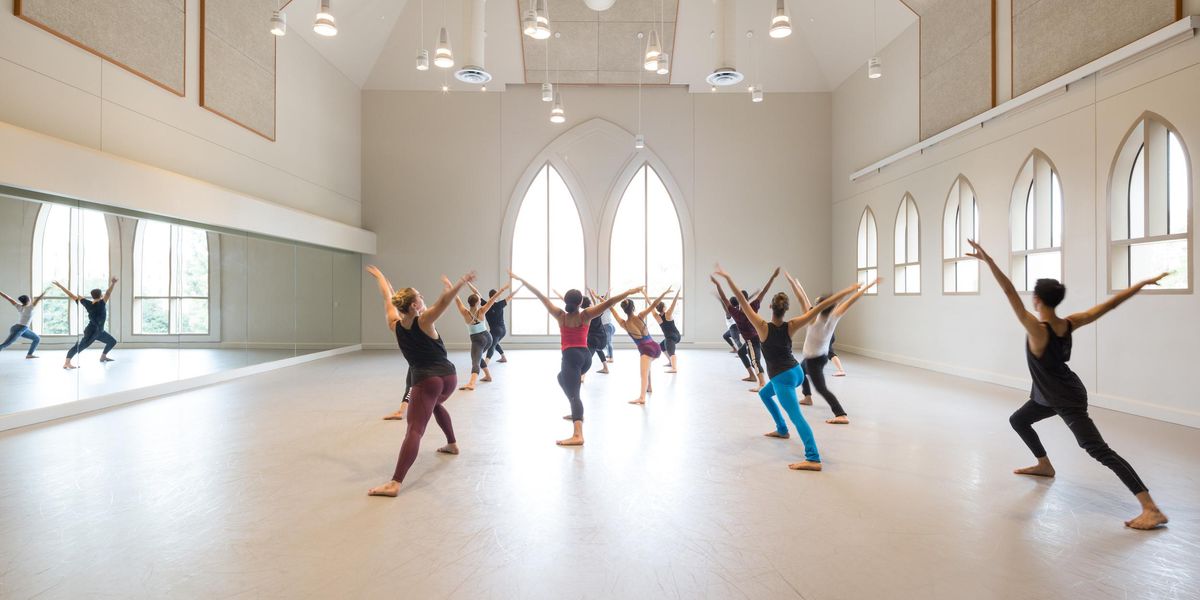Making It Happen: First-Hand Experience
Choreographers and students team up at UCLA.
For college students, getting up close with a professional choreographer’s process is not uncommon on campuses these days. But it’s still exciting and invaluable—and it’s precisely what David Roussève had in mind when he created First Hand for UCLA’s Department of World Arts and Cultures/Dance. A professor of choreography and performance, Roussève is also the Bessie Award–winning artistic director of the Los Angeles–based dance/theater troupe Reality.
“It gives choreographers a chance to try out new ideas and develop vocabulary,” says Roussève of the course he created in 2011. “And since we use the students, they get the best of what we as choreographers and teachers have to offer. It’s a real development process with no pressure—although you can’t goof off,” he says with a chuckle.
And unlike the “old days,” notes Roussève, when students were taught existing repertoire to present in concerts, First Hand is all about the process of creating new works. UCLA has five professional choreographers on full-time faculty, plus adjunct and visiting artists, including the hip hop artist Rennie Harris, who usually teaches two courses a year. As they devise new projects, their students get a taste of what Roussève calls “the real world,” beginning with auditions and ending with two performances of a fully produced work.
“Auditioning is part of the experience, so I tell them, ‘Get used to it,’ ” says Roussève. “And though we were adamant that the class be informal and just about ideas, the pieces ended up being pretty well-formed.”
Indeed, Harris’ work was the germ for his Alvin Ailey American Dance Theater commission, the warmly received Home, which premiered last December. Roussève says that his own 20-minute sketch has also become the basis for a full-evening work he’s developing, Stardust. Set to the music of Nat King Cole, the final piece is scheduled to premiere in 2013 or 2014, with three of his First Hand students also slated to perform.
One of those students, Nguyen Nguyen, who will receive his master’s degree in June, says the course was helpful in a number of ways.
“We had a chance to see how choreographers create work, how they direct, how they come up with material, how they coordinate bodies in space”— observations that he can apply to his own work. “It was valuable for me as a choreographer,” he adds, “to see how to get the product ready to be put onstage in a short amount of time.”
For Victoria Marks, UCLA professor of choreography and performance, First Hand proved a two-way street. She notes that for students, it provided a place to put into practice what they’re learning in other classes. “When you’re making a dance,” says Marks, who creates work for the stage, film, and in community settings, “all the things that an aspiring artist is studying come together—technique, composition, improvisation. So training becomes a vehicle for creating. Often there’s a disconnect between technique and composing, but I feel that making these new works really addresses that for the students.”
Marks explains that students also get to see their professors in less formal situations where they can be humorous, even vulnerable. But unlike Harris, Roussève, and fellow faculty member Lionel Popkin (whose original work for First Hand will be mounted at Los Angeles’ REDCAT during its 2013–14 season), Marks used the opportunity to make a dance without expectations.
“I could practice my craft and see what was going on, but for me there was a lot less on the line. When you choose to continue your choreographic career as an employee of a university, you’re split in so many directions. You’re teaching, you’re participating in the life of that academic/artistic community, but the piece of the pie that is you and your creative process gets smaller and smaller. This was a wonderful way to make that connection—to make my commitment to my students and to myself in my own development as an artist.”
First Hand is being offered again this year, and Roussève wants to continue running it “at the highest level possible.” That includes keeping it fun. As he says, “We get to explore, laugh, joke, take risks—all that good stuff that the students need to be exposed to in the creative process.”




